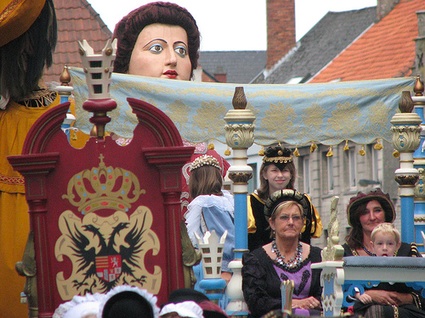This is Mechelen:
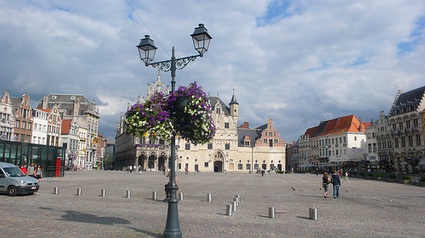
These are my shoes.
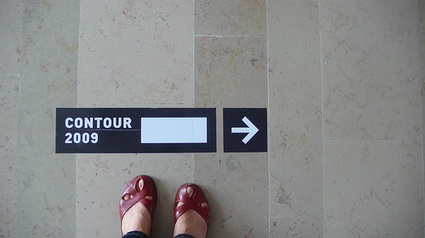
Not that anyone should be interested, i just happen to like these shoes a lot. Almost as much as i liked Contour, the Biennial for Moving Image (apparently saying “video art” is so ’80s) that takes place until October 18 in Mechelen. Mechelen is located right between Antwerp and Brussels. It’s rather small (80 000 inhabitants) but back in the 16th century it was the capital of the Low Countries (very roughly the Netherlands, Belgium and Luxembourg). There are splendid buildings almost everywhere you look in the center, people cultivate the witloof and celebrate the region’s glorious past with a parade called the Ommegang (picture below).
The Contour biennial showcases artists’ films, videos and installations in special locations all over the historical center of Mechelen. This year’s edition, curated by Katerina Gregos, bears the rather pompous title ‘Hidden In Remembrance Is The Silent Memory Of Our Future’. 20 years after the fall of the Berlin Wall, Contour advocates the importance of history and gives a voice to 18 artists who explore the way residues of history affect our perception of the present as well as our visions of the future.
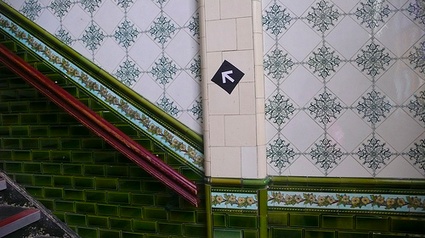
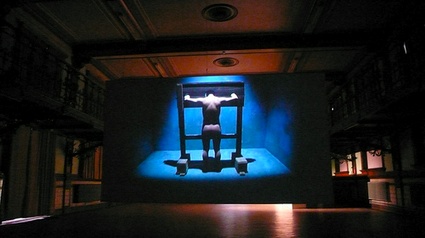
First of all i must say that never have i been to such a festival of the senses. Some of the screening rooms were stuffy and uncomfortably hot, others were airy and lonely. I don’t know if there’s an employee in charge of spraying flowers with extra-potent perfume but the city center smells really nice, meanwhile the entrance of one of the exhibition venues reeked of urine. Everything is within walking distance, you get into hidden courtyards and a puppet theater, step up an Art Nouveau staircase or discover Art Deco furniture, enter 16th century buildings or even a brewery turned into design shop, etc.
Artists’ view and interpretation of history seems to be a theme at the heart of curators’ research these days. A couple of years ago, HMKV in Dortmund proposed the admirable History Will Repeat Itself (see review part 1 and 2) and LABoral in Gijon is currently running The past in the present and the near in the far. History is an engrossing topic. History is made of stories that are close to us no matter how long ago they have taken place. Besides, history is given such little space in our life today (Katerina Gregos calls it our “culture of present-ism”) that it comes with an aura of exoticism.
A few highlights of what the biennial has to offer:
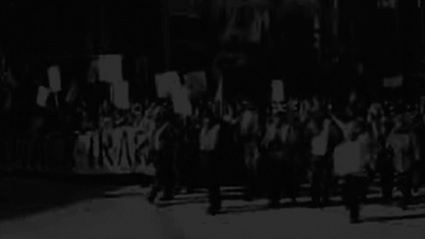 Herman Asselberghs, Black Box, 2009. Commissioned by Contour 2009
Herman Asselberghs, Black Box, 2009. Commissioned by Contour 2009
9/11 is the event that marked the beginning of the new century in media and thus in popular consciousness. With the film Black Box, Herman Asselberghs suggests to substitute the tragic date for a more redemptive and emancipatory moment: 2/15, the day millions of people around the world protested against the US government’s decision to invade Iraq. 2/15 is infinitely less spectacular but that doesn’t mean that its political potential could be dismissed easily. What alternative forms exist that are not subject to what Baudrillard called the violence of the image or the violence done to the image?
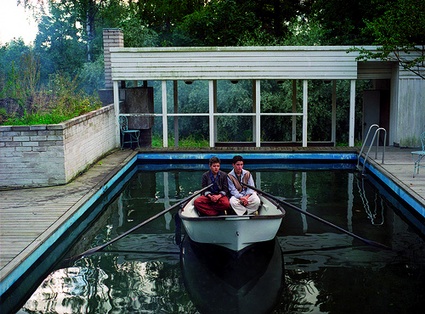 Eija-Liisa Ahtila, Where is Where?, 2008. Produced and Copyright owned by Crystal Eye Ltd., Helsinki. Courtesy of Marian Goodman Gallery, New York and Paris
Eija-Liisa Ahtila, Where is Where?, 2008. Produced and Copyright owned by Crystal Eye Ltd., Helsinki. Courtesy of Marian Goodman Gallery, New York and Paris
Eija-Liisa Ahtila‘s haunting Where is Where? explores colonialism and the tension between two different cultures. Its starting point is a real event that took place in Algeria in the framework of the War of Independence from France. In reaction to the atrocities of French colonial repression, two young Arab boys killed a French friend, a boy of their own age. Many years later, a European woman’ obsession with the story brings it into the present day. The very personal perspective of the film and the violence it evokes raise the ghosts of colonialism and oppression that keep on infiltrating today’s conflicts between western and Arab cultures.
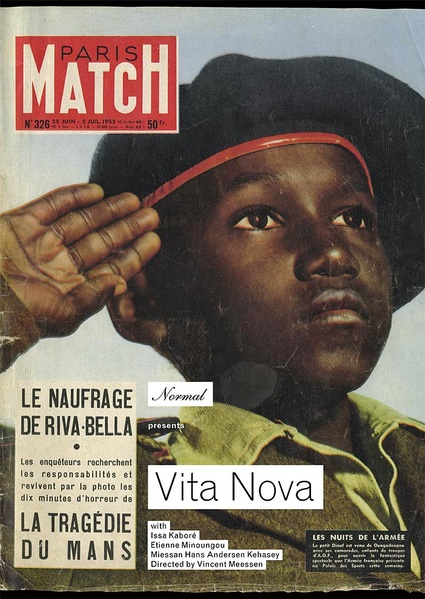 Vincent Meessen, Vita Nova, 2009. Commissioned by Contour 2009
Vincent Meessen, Vita Nova, 2009. Commissioned by Contour 2009
Vincent Meessen‘s Vita Nova takes as its point of departure a cover of the French magazine Paris-Match, from 1955. On this cover, a child soldier is depicted in the act of making a military salute. The artist doesn’t know much about the child, except that he’s called Diouf and comes from Ouagadougou. He nevertheless sets on a journey to try and trace him. Taking this cover as his cue, the artist weaves together phantoms from the colonial past, historical facts, re-writing of history and the writings of Roland Barthes. In his in Mythologies collection published in 1957, Barthes analyzed the myth of the French imperiality (i.e. that France’s empire treats all its subjects equally). With this film, Meessen not only brings to the fore repressed or marginalised narratives but also reflects on the artifice that forms part of historiographical discourse, using the fiction of ‘realism’ and the experience of the archive to elaborate his own personal, ‘factual fiction.’
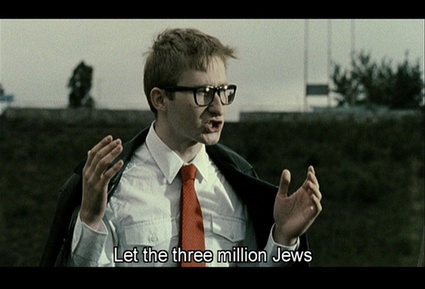 Yael Bartana, Mary Koszmary, 2007. Courtesy Annet Gelink Gallery, Amsterdam and Foksal Gallery, Warsaw
Yael Bartana, Mary Koszmary, 2007. Courtesy Annet Gelink Gallery, Amsterdam and Foksal Gallery, Warsaw
Yael Bartana‘s Mary Koszmary (Dreams and Nightmares) is a reflection on history and possible change based on a consideration of the complex legacies and realities of anti-Semitism and xenophobia.
A frail young man wearing glasses enters Warsaw’s dilapidated Olympic Stadium. The left wing intellectual delivers a piece of oratory, in which he calls for the return of the lost Jewish community to Poland. Bartana utilizes the language of propaganda to make a plea for tolerance. The allusion to Europe’s dark past is reinforced by the reference to the aesthetic strategies of Leni Riefenstahl, a filmmaker famous for being a pioneer in film and photographic techniques and a friend of Adolf Hitler and Joseph Goebbels.
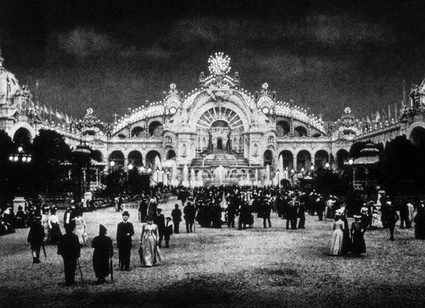 Andreas Bunte, La Fée Electricité, 2007. Courtesy the artist and Galerie Ben Kaufmann, Berlin. Stills: Hans Moser, Thomas Rosier
Andreas Bunte, La Fée Electricité, 2007. Courtesy the artist and Galerie Ben Kaufmann, Berlin. Stills: Hans Moser, Thomas Rosier
Contour 2009, Hidden In Remembrance Is The Silent Memory Of Our Future is open until 18 October, 2009 in Mechelen, Belgium.
My images. Image on the homepage: Yael Bartana, Mary Koszmary, 2007. Single channel Super 16mm fi lm transferred to video: colour, sound 10′ 50″ – Courtesy Annet Gelink Gallery, Amsterdam and Foksal Gallery, Warsaw.

